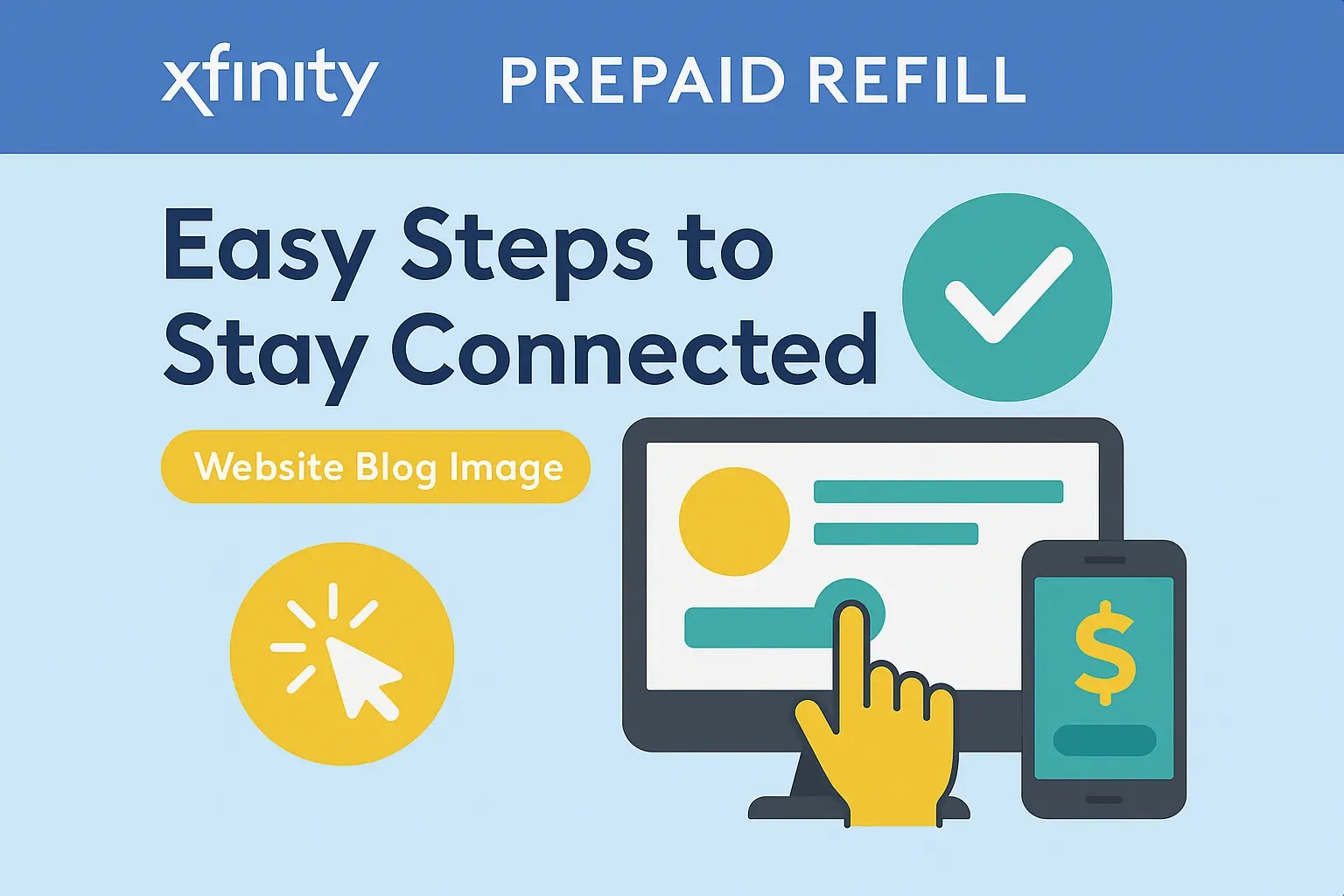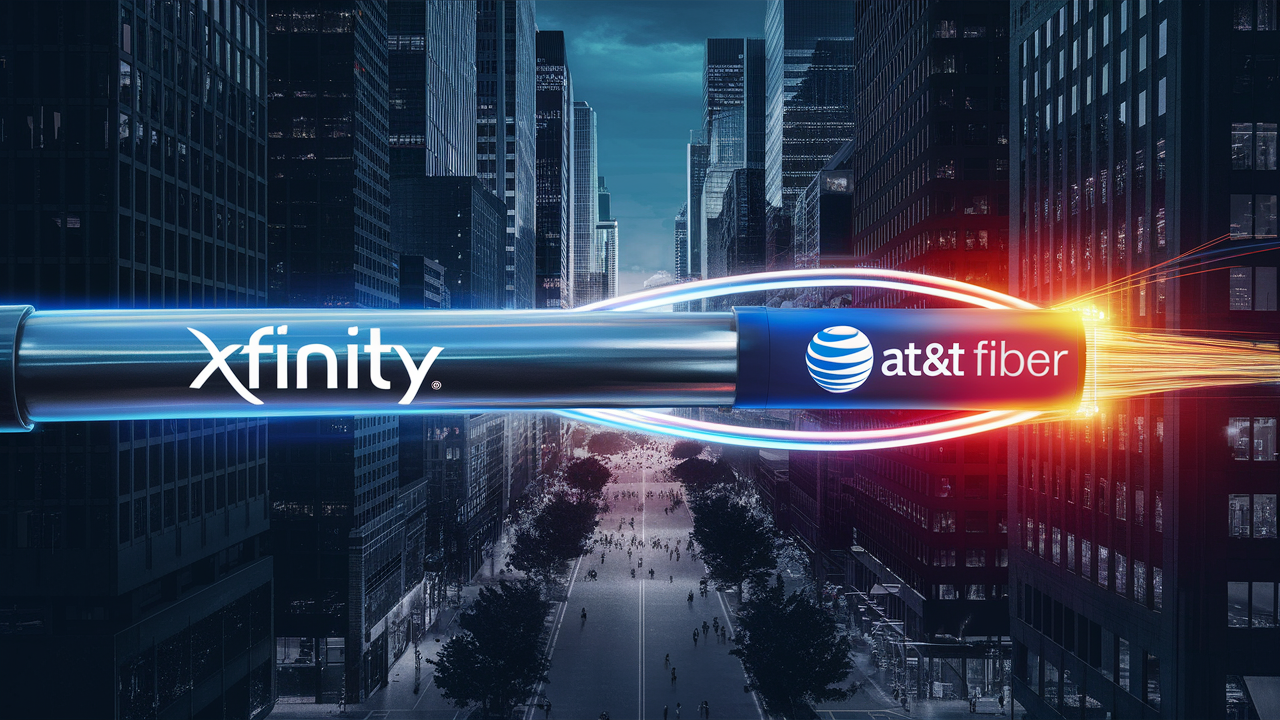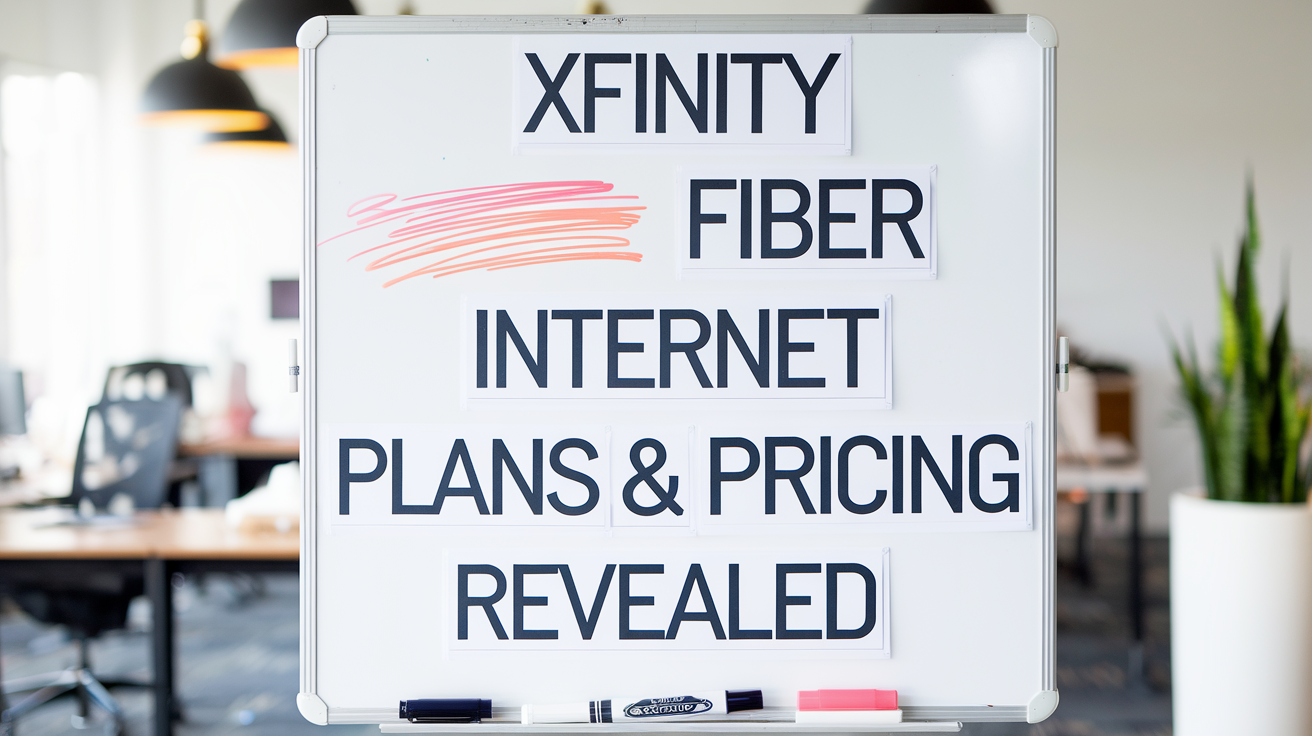How To Skip Commercials On Xfinity Online?

Introduction: The Quest to Conquer Xfinity Ads
Tired of the relentless barrage of commercials interrupting your favorite shows on Xfinity? You're not alone. Many subscribers seek effective ways to bypass these ad breaks. This guide dives deep into understanding how Xfinity inserts ads and explores legitimate methods, alongside a candid look at unsupported tactics and their inherent risks, to help you reclaim your viewing experience in 2025.
Understanding Xfinity's Ad Insertion Mechanisms
To effectively address how to skip commercials on Xfinity online, it's crucial to understand how these advertisements are integrated into the viewing experience. Xfinity, like most major cable and streaming providers, employs sophisticated systems to deliver advertisements. These systems are designed to be dynamic and often personalized, making them an integral part of the content delivery model. In 2025, these mechanisms have become even more advanced, leveraging data to target specific demographics and viewing habits.
The Evolution of Ad Delivery
Historically, commercials were broadcast at predetermined intervals during live television. With the advent of digital cable and on-demand services, the method of ad delivery has transformed. Xfinity utilizes several key technologies:
- Server-Side Ad Insertion (SSAI): This is a dominant technology for streaming content. In SSAI, ads are "stitched" directly into the video stream before it reaches your device. This means the ad becomes part of the video file itself, making it incredibly difficult to distinguish from the program content. This is particularly prevalent in live TV streams and on-demand content accessed through Xfinity's platforms.
- Client-Side Ad Insertion (CSAI): While less common for core Xfinity streaming services, CSAI is more typical in third-party apps or web players. Here, the player on your device is instructed by a server when and what ads to play. This method offers more flexibility for ad targeting but can sometimes be more susceptible to ad-blocking technologies, though Xfinity's proprietary platforms are designed to mitigate this.
- Dynamic Ad Insertion (DAI): This is the overarching strategy that leverages both SSAI and CSAI. DAI allows Xfinity to insert ads in real-time, often tailored to the individual viewer based on their subscription, location, viewing history, and even the time of day. This personalization aims to increase ad relevance and, consequently, revenue.
Why Skipping is Difficult
The primary reason skipping commercials on Xfinity, especially through their official apps and set-top boxes, is challenging lies in the technical implementation of SSAI. When ads are part of the video stream, there's no separate "ad file" to block or skip. The system treats the ad segment as if it were part of the show. Attempting to fast-forward through these segments is often restricted by the platform itself to ensure ad delivery.
Furthermore, Xfinity's business model relies heavily on advertising revenue. While they offer premium services and packages, a significant portion of their income is derived from selling ad slots. Therefore, their infrastructure is built to facilitate, not hinder, ad playback. In 2025, this integration is tighter than ever, with providers investing heavily in ad-tech to maximize engagement and revenue from these segments.
On-Demand vs. Live TV
It's important to differentiate between on-demand content and live TV when discussing ad insertion:
- On-Demand Content: This includes recorded shows, movies, and network-specific libraries. These are prime candidates for SSAI, where ads are seamlessly woven into the content.
- Live TV: During live broadcasts, ads are inserted dynamically. While some DVR functionalities might allow for limited fast-forwarding of recorded live events (if the content is not protected), live streams themselves are generally not skippable.
Understanding these technical underpinnings is the first step towards evaluating the feasibility and methods of skipping commercials on Xfinity online platforms.
Official Xfinity Features for Ad Management
Xfinity, as a service provider, offers certain features that, while not directly enabling commercial skipping in the traditional sense, can help manage your viewing experience and minimize ad disruption. These are the sanctioned methods, designed within the framework of their service agreement. In 2025, these features continue to be the primary recourse for users looking for a less ad-intensive experience.
DVR Functionality: The Primary Tool
The most significant official feature that aids in managing commercials is Xfinity's Digital Video Recorder (DVR) service. When you record a live TV program using an Xfinity DVR, you gain a degree of control over playback that isn't available with on-demand or live streaming. However, the effectiveness of this control has evolved.
- Fast-Forwarding Recorded Content: For many recorded programs, Xfinity's DVR allows you to fast-forward through commercial breaks. This is the closest you'll get to "skipping" ads through an official channel. You can typically use the fast-forward button to quickly move past the ad segments.
- Limitations on Fast-Forwarding: It's crucial to note that not all recorded content is fully fast-forwardable. Xfinity, in partnership with content providers, may implement restrictions on certain programs or networks. This is often due to agreements that mandate a certain level of ad exposure. For instance, some newer network shows or specific premium content might have "ad markers" that prevent or limit fast-forwarding.
- Commercial Skip Feature (Limited Rollout): In some markets and for specific content, Xfinity has been piloting a "Commercial Skip" feature. This feature automatically skips entire commercial breaks when you press the fast-forward button once. This is a significant advancement, but its availability is not universal and depends on your service area, equipment, and the specific content you are watching. As of 2025, this feature is still being rolled out and is not a guaranteed option for all users.
On-Demand Content and Ad Breaks
When you watch content through Xfinity's On Demand library, the experience is generally more restrictive regarding ad skipping. Because these programs are often streamed with server-side ad insertion, you typically cannot fast-forward through commercials. The system is designed to ensure you view the ads as they are embedded in the stream.
However, there are nuances:
- Network Apps and Websites: If you access content from a specific network (e.g., ABC, NBC, Fox) through their respective apps or websites, and you authenticate using your Xfinity credentials, the ad experience might differ. Some network apps may offer more flexibility with fast-forwarding than Xfinity's native on-demand platform. This is because the ad insertion is managed by the network's streaming infrastructure, not solely by Xfinity.
- Premium Content and Ad-Free Tiers: For some premium channels or specific content libraries, Xfinity might offer ad-free viewing options, often as part of a bundled package or a separate subscription add-on. These are not about skipping ads but about opting out of them entirely by paying a premium.
Xfinity Stream App and Web Portal
The Xfinity Stream app (for mobile devices and smart TVs) and the web portal offer access to live TV, DVR recordings, and on-demand content. The ability to skip commercials within these platforms mirrors the capabilities of the set-top box:
- DVR Recordings: You can typically fast-forward through commercials on recorded programs accessed via the Stream app or portal, subject to the same content restrictions mentioned earlier.
- Live TV and On-Demand: Fast-forwarding is generally not possible for live streams or most on-demand content due to the nature of dynamic and server-side ad insertion.
Summary of Official Methods
In summary, the official Xfinity features for managing commercials are primarily:
- DVR Fast-Forwarding: The most common method for recorded content, with potential restrictions.
- Commercial Skip Feature: A newer, limited rollout feature that automatically skips breaks.
- Premium/Ad-Free Tiers: An option to pay more for an ad-free experience.
- Network-Specific Apps: Potentially different ad experiences when authenticating with Xfinity credentials.
It's important for users to understand these limitations and to check for the availability of the Commercial Skip feature in their region and for their specific content preferences.
Unsupported Methods and Their Risks
Beyond the official features provided by Xfinity, there exists a realm of unofficial or unsupported methods that users might consider to bypass commercials. These methods often involve third-party software, hardware modifications, or exploiting loopholes in the system. While the allure of completely skipping ads is strong, these approaches come with significant risks that users must be aware of. In 2025, the landscape of these unsupported methods is constantly shifting, with providers like Xfinity actively working to patch vulnerabilities.
Third-Party Software and Ad Blockers
Some users explore using general ad-blocking software or specialized scripts designed to interfere with ad delivery. The effectiveness of these methods on Xfinity's proprietary platforms is highly limited for several reasons:
- Server-Side Ad Insertion (SSAI): As discussed, SSAI embeds ads directly into the video stream. This means there's no separate ad element for a typical ad blocker to detect and block. The ad is indistinguishable from the program content from the software's perspective.
- Proprietary Platforms: Xfinity's streaming apps and set-top boxes run on closed systems. General web-based ad blockers designed for browsers are unlikely to function within these environments. Attempts to use browser-based ad blockers on the Xfinity website might block some website elements, but they generally cannot interfere with the video stream itself.
- Constant Updates: Xfinity and its technology partners continuously update their systems to detect and circumvent any attempts at ad blocking. What might appear to work briefly could be rendered ineffective by a software update shortly thereafter.
VPNs and Geo-Spoofing
Virtual Private Networks (VPNs) and other geo-spoofing techniques are sometimes suggested. The idea is that by changing your perceived location, you might access different ad streams or potentially bypass certain ad-serving mechanisms. However, for Xfinity's core services, this is generally ineffective for ad skipping:
- Targeted Ads: While VPNs can change your IP address, Xfinity's ad targeting is often based on more than just IP location. It can include account information, device identifiers, and other data points that are not masked by a VPN.
- Service Restrictions: Using VPNs to bypass geo-restrictions or manipulate service delivery can violate Xfinity's Terms of Service. This could lead to service disruptions or account penalties.
- No Ad Skipping Benefit: VPNs are not designed to intercept or alter video streams in a way that would enable commercial skipping.
Hardware Modifications and Jailbreaking
Another category of unsupported methods involves modifying the hardware of Xfinity set-top boxes or attempting to "jailbreak" devices to gain root access. This is highly discouraged and extremely risky:
- Voiding Warranties: Any unauthorized modification to Xfinity equipment will almost certainly void your warranty, making you liable for repair or replacement costs.
- Service Disruption: Tampering with the hardware or firmware can render the device inoperable, leading to a loss of service.
- Security Risks: Gaining unauthorized access can expose your network and devices to security vulnerabilities.
- Legal Ramifications: In some cases, unauthorized modification of service equipment could have legal consequences.
Risks Associated with Unsupported Methods
Engaging with unsupported methods carries a multitude of risks:
- Violation of Terms of Service: Most unsupported methods directly violate Xfinity's Terms of Service. This can result in warnings, service suspension, or even termination of your account.
- Security Vulnerabilities: Downloading or using third-party software from untrusted sources can expose your devices to malware, viruses, and spyware. This can lead to data theft, identity theft, or compromised network security.
- Device Instability and Damage: Hardware modifications or attempting to install unverified software can permanently damage your Xfinity equipment, leading to costly replacements.
- Ineffectiveness: The most common outcome is that these methods simply do not work due to the advanced nature of Xfinity's ad delivery systems. You may waste time and resources with no tangible benefit.
- Ethical and Legal Concerns: Circumventing advertising systems can be seen as unethical and, in certain contexts, may have legal implications, particularly if it involves copyright infringement or unauthorized access.
Given these significant risks, it is generally advisable to rely on the official features and functionalities provided by Xfinity for managing your viewing experience. The potential consequences of employing unsupported methods far outweigh the perceived benefits.
Strategies for Minimizing Ad Exposure on Xfinity
While completely eliminating commercials on Xfinity might be an elusive goal without opting for premium ad-free tiers, several practical strategies can significantly minimize your exposure to advertisements. These methods focus on smart content selection, leveraging available features, and understanding the nuances of different viewing options. In 2025, these strategies remain the most effective way for the average user to reduce ad interruptions.
Prioritize On-Demand Content from Networks with Limited Ads
Not all on-demand content is created equal when it comes to ad load. Some networks and content providers are more aggressive with ad insertion than others. Researching which networks or specific shows tend to have fewer or shorter commercial breaks can be a useful strategy.
- Network Apps: As mentioned, using network-specific apps (like HBO Max, Showtime Anytime, etc., if you subscribe to them through Xfinity) and authenticating with your Xfinity credentials can sometimes offer a different ad experience. Some premium network apps are entirely ad-free for their core content.
- Content Libraries: Explore Xfinity's own on-demand library. While many programs will have ads, certain curated collections or older content might have fewer interruptions.
Leverage Your DVR for Recorded Content
Your Xfinity DVR remains your most powerful tool for managing ads on live television programming. Make it a habit to record shows you want to watch rather than relying solely on live viewing or on-demand versions.
- Record and Watch Later: Set your DVR to record upcoming episodes of your favorite shows. This allows you to watch them at your convenience and use the fast-forward function to bypass commercials.
- Utilize the "Commercial Skip" Feature: If you have access to Xfinity's "Commercial Skip" feature, use it religiously. A single press of the fast-forward button can save you considerable time. Check your Xfinity app or contact customer service to see if this feature is available in your area and for your equipment.
- Be Aware of Content Restrictions: Remember that some content may have fast-forwarding limitations. If you encounter this, consider if the on-demand version (which you likely can't skip ads on) is preferable to watching the ads on the recorded version.
Explore Xfinity's Premium and Ad-Free Options
While this involves additional cost, it's the most direct and guaranteed way to avoid commercials on certain content.
- Premium Channel Subscriptions: Subscribing to premium channels like HBO, Showtime, Starz, or Cinemax through Xfinity often provides access to their content via dedicated apps or on-demand libraries that are ad-free.
- Bundled Packages: Xfinity occasionally offers promotional bundles that might include ad-free tiers for certain services or content. Keep an eye out for these offers.
- Specific Content Add-ons: Some content providers offer specific ad-free add-ons. While less common for general TV, it's a possibility for niche streaming services integrated with Xfinity.
Smart Viewing Habits
Adjusting your viewing habits can also play a role:
- Watch During Commercial Breaks: If you are watching live TV or content where fast-forwarding is not an option, use the commercial breaks as an opportunity to take a break, grab a snack, or check your phone. This makes the interruption less frustrating.
- Utilize Streaming Services Wisely: If you subscribe to other streaming services (Netflix, Hulu, etc.), leverage those for ad-free viewing or content with fewer ads. Cross-reference what you want to watch with which platform offers the best ad experience.
- Check Xfinity Stream App Features: Regularly check the Xfinity Stream app and your account settings for any new features or updates related to ad management or commercial skipping. Xfinity is continually evolving its service.
Understanding Content Availability
The availability of content on Xfinity On Demand versus what's available through a DVR recording can differ. Sometimes, a show might be available on-demand but with unskippable ads, while a DVR recording of the same show might allow for fast-forwarding. Always check the options available to you.
A Comparison of Strategies
Here's a brief comparison of the effectiveness and cost of these strategies:
| Strategy | Effectiveness for Ad Minimization | Cost | Ease of Use |
|---|---|---|---|
| DVR Recording & Fast-Forward | High (for recorded content) | Included with DVR service (monthly fee) | Moderate (requires setup) |
| Commercial Skip Feature | Very High (where available) | Included with DVR service (if available) | Very High (one-button operation) |
| Premium Channel Subscriptions | Very High (for specific content) | Additional monthly fees | High (access via apps/on-demand) |
| Network-Specific Apps | Variable (depends on network) | Requires subscription to channel via Xfinity | High (requires app download/login) |
| Smart Viewing Habits | Moderate (mental shift) | None | High (behavioral change) |
By combining these strategies, users can create a viewing experience that significantly reduces their reliance on watching commercials on Xfinity, even within the constraints of the service's ad-supported model.
The Future of Ad Skipping with Xfinity
The landscape of television advertising and content consumption is in constant flux. For Xfinity subscribers seeking to skip commercials, understanding the potential future developments is key. Several trends and technological advancements are likely to shape how ads are delivered and how users might interact with them in the coming years. As of 2025, the focus is on enhanced personalization and evolving viewing behaviors.
Technological Advancements in Ad Delivery
Xfinity, like other major providers, is heavily invested in sophisticated ad technology. This includes:
- AI and Machine Learning for Ad Targeting: Expect ads to become even more personalized. AI algorithms will analyze viewing habits, demographics, and even real-time behavior to serve ads that are perceived as more relevant. This makes ads potentially more engaging for some viewers, but it also means the core problem of ad interruption remains.
- Interactive Ads: The future may see more interactive advertisements that viewers can engage with directly. While this doesn't facilitate skipping, it aims to make ad breaks more of an experience rather than a passive interruption.
- Addressable TV Advertising: This technology allows different households to receive different ads during the same program slot. It's a sophisticated form of DAI that provides granular control to advertisers and further integrates ads into the viewing fabric.
The Role of Content Providers and Partnerships
Xfinity's ability to control ad insertion is often tied to its agreements with content providers (networks, studios). As streaming wars continue and content ownership becomes more fragmented, these partnerships will evolve.
- Bundling and Exclusive Content: We may see more bundling of services where ad-free content is a key differentiator. Xfinity might partner with specific content creators to offer exclusive ad-free libraries as part of premium packages.
- Direct-to-Consumer Models: As more content moves to direct-to-consumer streaming platforms (which Xfinity also offers access to), the control over ad delivery shifts. Xfinity's role might become more of an aggregator, with ad policies dictated by the individual streaming services.
Potential for Enhanced User Control (or Lack Thereof)
While the trend is towards more integrated and personalized advertising, there's also a growing consumer demand for more control. This creates a push-and-pull dynamic.
- Wider Rollout of "Commercial Skip": If Xfinity's current "Commercial Skip" feature proves successful and cost-effective, it's likely to be expanded to more users and content types. This would be the most significant official advancement in ad skipping.
- Subscription Fatigue and Ad Tolerance: As consumers face increasing subscription costs and ad loads across various platforms, there might be a market shift. Providers might experiment with different tiers, perhaps offering a mid-tier with limited, more relevant ads, or a higher tier with more extensive ad-skipping capabilities.
- Regulatory Changes: Government regulations regarding advertising practices, data privacy, and consumer choice could also influence how ads are delivered and managed in the future.
The Continued Challenge of Unsupported Methods
As Xfinity and other providers enhance their ad-delivery systems, unsupported methods will likely become even less effective and more risky. The technological arms race between ad blockers and ad servers is ongoing, but for closed systems like Xfinity's, the provider typically has the advantage.
- Increased Detection: Future software updates will likely include more robust detection mechanisms for any attempts to circumvent ad playback.
- Security Risks Amplified: The more sophisticated the ad systems become, the more sophisticated (and potentially dangerous) the tools designed to break them might be.
Focus on Value-Added Services
Instead of focusing solely on ad skipping, Xfinity might emphasize other value-added services. This could include:
- Enhanced DVR Capabilities: Features that make managing recorded content easier, including better organization and faster navigation.
- Content Discovery Tools: Improved recommendation engines that help users find content they enjoy, potentially reducing time spent browsing through ad-supported libraries.
- Integration with Other Services: Seamless integration with other streaming apps and smart home devices, making the Xfinity platform a central hub for entertainment.
The future of ad skipping on Xfinity will likely involve a combination of technological evolution, strategic partnerships, and a response to consumer demand. While complete ad elimination might remain a premium offering, users can expect continued refinement of features like DVR fast-forwarding and potentially wider availability of automatic commercial skip options. Staying informed about Xfinity's service updates and exploring available official features will be the most reliable approach for managing ad exposure.
Conclusion: Navigating the Ad Landscape
The quest to effectively skip commercials on Xfinity online, particularly in 2025, is a nuanced endeavor. While the dream of a completely ad-free experience on all content through simple "skip" buttons remains largely aspirational for standard packages, understanding Xfinity's sophisticated ad insertion technologies like Server-Side Ad Insertion (SSAI) is crucial. These methods embed ads directly into the video stream, making them exceptionally difficult to bypass with unsupported third-party tools, which carry significant risks including service disruption, voided warranties, and security vulnerabilities.
The most reliable and recommended approach involves leveraging Xfinity's official features. Your DVR service is paramount; recording live programs allows for fast-forwarding through commercial breaks, though content restrictions may apply. Keep an eye out for the ongoing rollout of Xfinity's "Commercial Skip" feature, which offers a more automated solution where available. For guaranteed ad-free viewing on specific content, consider Xfinity's premium channel subscriptions or ad-free tiers, which come at an additional cost but provide a seamless experience.
Strategically choosing on-demand content, utilizing network-specific apps when authenticated through Xfinity, and adopting smart viewing habits can further minimize ad exposure. While the future may bring more advanced ad personalization and potentially wider availability of ad-skipping features, relying on official, supported methods remains the safest and most effective path. By staying informed and utilizing the tools Xfinity provides, you can significantly enhance your viewing experience and reduce the frustration of commercial interruptions.





